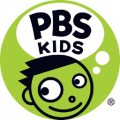There’s an exciting moment in baseball games (yes – they exist) when you see a pitcher repeatedly shaking his head “no” to the catcher’s calls. The hurler rejects pitch after pitch hoping the catcher will come around to a specific pitch he believes will work.
While it’s the catcher’s job to make the recommendation, sometimes the pitcher just has a hunch a certain pitch will stop a rally, seal the win, or knock a batter off their game.
These are risky pitches. But if they pitcher knows the opponent as well as he knows his own abilities, the risk can and often does — pay off.
Sometimes a project we’re working on calls for the same kind of risky pitch, waving off the expected directions, saying “no” to the easiest answers and simplest solutions. Sometimes Whistle makes some risky pitches, and yes, they, too, pay off.
But really, these recommendations aren’t all that risky, especially since we spend so much time getting to know each and every one of our clients inside and out… their users, organizational goals and challenges, the industry, and their brand – is critical to Whistle Studio’s ability to deliver the right product solution, even when it’s not what the client expected. And often, it’s not what the client expected.
During meetings, which determine the direction the product moves at every stage of the research, design, and development process, we’ve come to notice that clients often take the aforementioned journey from surprise to delight, with a quick stop in “curiosity” and/or “concern.”
I wanted to walk you through this journey to see what we learned about clients, emotions, and managing expectations all along the way…
Surprise:
When a client works with Whistle, they know (at least I sure hope they do) that they’re going to get a solid solution. They also might be harboring that assumption that after we do our research, testing, planning, and prototyping, we’ll come back with the solution they had in mind all along. “We’re brilliant!” they want to say. “We knew it!” And they are brilliant. (Hi, clients!)
However, we may (and often do) uncover a way to approach the project that the client may not have considered before. We pinpoint the user’s pain point, name it, and explore all the ways to reduce that pain to improve the experience. That’s when we see the client’s surprise. “How did you know? Why didn’t we think of that? This isn’t at all what we were expecting…”
These are exciting moments, but then we gird our collective agency loins for the second phase…
Curiosity/Concern:
Exciting, provocative ideas are surprising, but they can also draw a lot of questions from the client: Will this impact the timeline and the budget? How can we be sure it will work? How will we convince the organization that this may be unexpected but it isn’t a bad idea?
Needless to say, these are all reasonable things to think about, and if they aren’t addressed they could tank our efforts to push the client to take risks in the name of the user. That’s why we encourage the client to ask as many questions about how we came to this conclusion. We talk through timeline. We talk about budget. We talk a lot about the impact this unique approach will have on the user, and the resulting benefit to the client.
If possible, we try to get the go-ahead in that meeting. “Yeah, Nick! Let’s do it!” But if it’s a really debatable approach, they may need some time to bring it back to the larger team for discussion. We never want to pressure the client into taking an approach they aren’t comfortable with, but more often than not – in the room, or in their own time – they realize that a little risk will yield a lot of reward for them and their users. Which is when we move to the third and final phase…
Delight:
Ahhhh… sweet relief. At this point, the client has explored their curiosity and worked out their concerns. When they realize the solution Whistle develops will be more than just a website or app, but a product that will truly delight the user… well, it delights the client, too.
Look, most savvy clients want a partner who will think critically about the approach to a project. That’s what we try to do, and it’s the part of the research and development process our team loves most.
“So what, Nick?”
Glad you asked.
Presenting a new, unexpected, and provocative idea can be scary. That fear leads to boring products. They don’t suck, but they could be way, way more awesome. They were clearly the result of an uninspired R&D process, or a client or team that never got the chance to see the “what if” option.
But if you push through the fear to present the ballsy idea, you’ll be okay. Remember that the surprise is a good thing, the curiosity and concern just mean that client is paying attention, and the delight is worth all the hard work.
And if you’re the client, and your agency partner is excited enough to present you with a new or unexpected approach, don’t say “no” first – let the surprise wow you, the concern drive you to understand more about how your partner got there, and the delight remind you that you’re in it for the user and the best solution should always win.

